Myths about teaching can hold you back


- Year 5
Solve comparison and change problems using division
I can solve comparison and change problems using division.


- Year 5
Solve comparison and change problems using division
I can solve comparison and change problems using division.
These resources will be removed by end of Summer Term 2025.
Switch to our new teaching resources now - designed by teachers and leading subject experts, and tested in classrooms.
These resources were created for remote use during the pandemic and are not designed for classroom teaching.
Lesson details
Key learning points
- A change in length can be described using division.
- Division can be represented as multiplication by a unit fraction.
- The stem sentence, 'The ___ is ___ times the length of the ___' can be used to support understanding.
- Comparison and change problems can be represented visually to support understanding.
Keywords
Comparison - When a comparison is made, we are determining how different two objects are. In this case, how many times longer, taller or deeper an object is than another.
Change - A comparison can also be made between an object before, and then after, a change. Examples of a change include a change in height of a flower due to growth.
Common misconception
Children may say 'ten times shorter' which is imprecise. Children are more familiar with multiplication resulting in an increase, and need to appreciate that it can also result in a decrease.
We say, 'ten times the original height' because this is more precise especially when the scale factor is fractional. When we multiply by a unit fraction, it is the same as dividing the whole by the denominator. This results in a decrease in length.
To help you plan your year 5 maths lesson on: Solve comparison and change problems using division, download all teaching resources for free and adapt to suit your pupils' needs...
To help you plan your year 5 maths lesson on: Solve comparison and change problems using division, download all teaching resources for free and adapt to suit your pupils' needs.
The starter quiz will activate and check your pupils' prior knowledge, with versions available both with and without answers in PDF format.
We use learning cycles to break down learning into key concepts or ideas linked to the learning outcome. Each learning cycle features explanations with checks for understanding and practice tasks with feedback. All of this is found in our slide decks, ready for you to download and edit. The practice tasks are also available as printable worksheets and some lessons have additional materials with extra material you might need for teaching the lesson.
The assessment exit quiz will test your pupils' understanding of the key learning points.
Our video is a tool for planning, showing how other teachers might teach the lesson, offering helpful tips, modelled explanations and inspiration for your own delivery in the classroom. Plus, you can set it as homework or revision for pupils and keep their learning on track by sharing an online pupil version of this lesson.
Explore more key stage 2 maths lessons from the Compare and describe measurements using knowledge of multiplication and division unit, dive into the full primary maths curriculum, or learn more about lesson planning.

Licence
Prior knowledge starter quiz
6 Questions
Q1.Which word or phrase completes the sentence: The green ribbon is ___ times the length of the white ribbon.

Q2.If the white ribbon is 39 cm long, how long is the green ribbon? The green ribbon is cm long.

Q3.The longer white ribbon is 36 cm long. How long is the shorter red ribbon? The red ribbon is cm long.

Q4.The white ribbon is 36 cm long. How long is the shorter red ribbon?

Q5.The longer white ribbon is 36 cm long. How long is the red ribbon?

Q6.Which statements are represented by this image?

Assessment exit quiz
6 Questions
Q1.A pencil was 15 cm long when it was new. It has been used and is now one third times its original size. Which image represents the change?
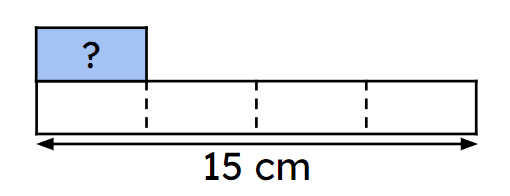
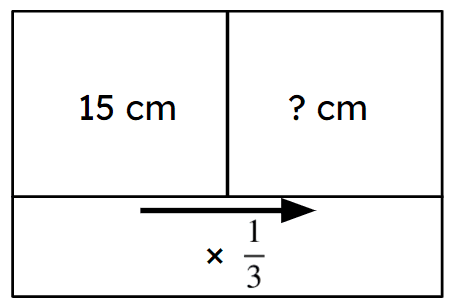
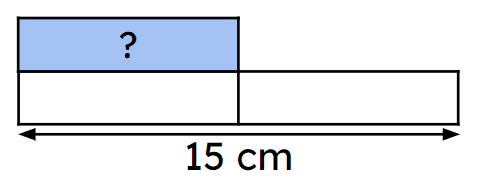
Q2.The length of a model car is one tenth of the length of the real car. The real car is 4 m long. Which table represents the lengths of the cars?
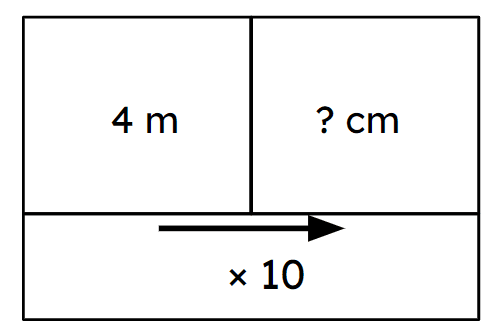
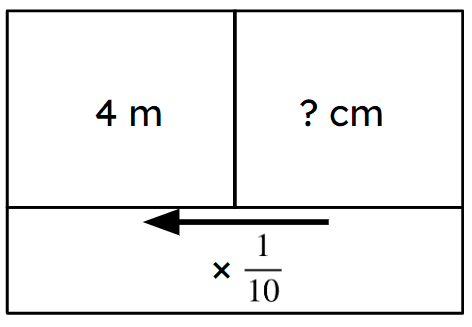
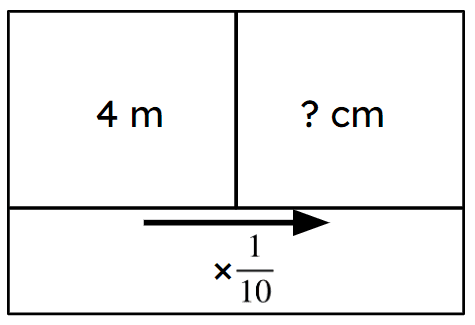
Q3.Compare the height of the tree and the sunflower and the height of the dog. Which sentences could describe the image?

Q4.A pencil was 15 cm long when it was new. It has been used and is now one third times its original size. The pencil is now cm long.
Q5.The length of a model car is one tenth of the length of the real car. The real car is 4 m long. Which calculations could you use to work out the length of the model car?
Q6.The dog is $${1}\over{4}$$ times the height of the sunflower. Match the possible heights of the dog and the sunflower.

Dog is 24 cm tall. -
Sunflower is 96 cm tall.
Dog is 45 cm tall. -
Sunflower is 180 cm tall.
Dog is 19 cm tall. -
Sunflower is 76 cm tall.
Dog is 25 cm tall. -
Sunflower is 100 cm tall.
Dog is 51 cm tall. -
Sunflower is 204 cm tall.

